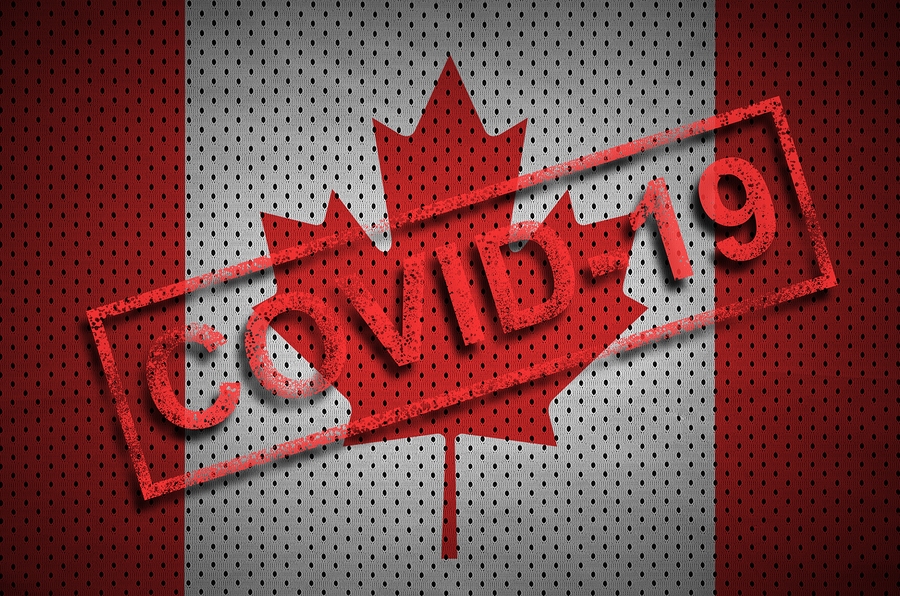We are currently in uncharted waters. The global pandemic is worsening, which has already resulted in an enormous blow to our economy. Bars and restaurants are closed. Theatres and sporting venues are closed. We’re all being asked to work from home and remain in isolation.
This is one of the most challenging times we have ever faced.
Not to mention there is an oil price war, which is wreaking further havoc on our economy. Normally this would be making front page headlines, however it’s been completely overshadowed by COVID-19. After all, our health is most important of all. Without it, nothing else matters.
On Sunday night, the US Federal reserve made an extreme move by cutting their short-term policy rate to 0% in efforts to minimize the economic disaster that is unfolding. A move like this would generally send the stock market soaring. However, the Dow Jones plummeted by almost 3000 pts the following day… the largest single day point loss in history.
The US rate cut came after the 0.50% rate cut from the Bank of Canada last Friday. It’s then up to the major banks adjust their prime rates to match the cut. They don’t have to match the cut, and it was uncertain as to whether they would come through. It wasn’t until Tuesday afternoon that they unanimously announced that they would be matching the full 0.50% cut. It’s possible that each bank was waiting to see what the other would do. All other mortgage lenders will follow the moves from the major banks, so once they announced they would match the cut, the other mortgage lenders then followed. The prime rate is now 2.95%.
Fixed Vs. Variable During Tough Times
Fixed rates became lower than variable around this time last year, which resulted in the most die-hard variable rate enthusiasts gravitating towards fixed rates. One of the most appealing aspects of variable rate mortgages was always that they were lower than their fixed rate alternatives. The risk associated with them is that prime rate can increase, therefore increasing the mortgage rate, as well as the payment in most cases. This is why I typically like to see variable rates at least 0.50% lower than the fixed rate options in order for me to comfortably suggest them. This is in a healthy economy however, so this does not apply at the moment.
Why Fixed Rates Were Better Choices Over The Last Year
With the variable rate options being higher than the fixed, and long-term outlook for prime rate to increase further, there became little appetite for variable rates over the past year. It got to the point where they were hardly even quoted, as they did not seem to make much sense. Fixed rates had become the norm with very few opting for a variable rate mortgage. The last time variable rate mortgages were higher than fixed was following the US housing collapse back in 2008.
Fast forward to our next major crisis: COVID-19.
Bank of Canada Will Cut Rates Further
With mortgage lenders matching the recent rate cut from the Bank of Canada, variable rate mortgages are now lower once again. The global pandemic has become much worse than originally thought a couple weeks ago.
The BOC is not yet finished with its rate cuts, and more will be coming.
The next scheduled rate announcement is on April 15th, but it’s quite unlikely that the BOC will wait until then to make the cut. Much like their previous rate cut, and the US rate cut, they’ll be forced to make another unscheduled rate announcement which will result in yet another cut.
Then possibly another cut on April 15th.
Could the Bank of Canada copy the US and go straight down to 0% with their next cut?
This is a likely possibility.
The question is, will the banks continue to match these rate cuts? This is a tough question to answer and next to impossible to predict. Given the severity of the pandemic, I would say that they will. We’ll soon see.
Negative Interest Rates
Some European countries have already gone to negative interest rates. I don’t think this is entirely off the table for North American markets either. The central banks will do what they need to do. Note that negative interest rates do not mean that the banks will be paying you for them to lend you money. However, it will result in even lower rates for anyone currently in a variable rate mortgage.
Mortgage Rates Will Remain Low
Given the severe economic blows our economy is taking, it will likely be years before things recover. I had originally thought that the BOC would increase their rate once we’ve made it through the COVID-19 pandemic. However, this was before everything started shutting down. It’s going to take the global economy quite some time to recover, and for this reason, both fixed and variable rates are expected to remain low for quite some time.
HUGE Window of Opportunity For Variable Rates Will Soon Be Gone
With the extreme likelihood that the BOC will slash their rate further, mortgage lenders are now starting to reduce their variable rate discounts. The lowest 5 year variable rates are currently prime -1.05% (1.90%) for high ratio (insured) mortgages. For uninsured mortgages, variable rates range from prime -0.90% (2.05%) to prime -0.75% (2.20%).
These discounts have already been reduced, yet mortgage lenders will be reducing them further.
Much further.
This is going to happen very soon. I would expect more announcements from lenders within the next couple of days. I would say that this is the last week to take advantage of the deep variable rate mortgage discounts. It’s just a matter of time before we see the discounts off prime disappear altogether.
It’s quite likely that we’ll soon start seeing prime + variable mortgage rates. It happened in 2008 when variable rate mortgages shot all the way up to prime +1.00%. There is a very good chance that this will happen again in 2020.
Who Can Take Advantage Of the Variable Rate Opportunity?
For anyone with a mortgage coming up for renewal, or with a new home purchase closing soon, I would act ASAP if you want to take advantage of the larger variable rate discounts while they last. Even those currently in the middle of their terms may want to consider breaking early. Anyone currently paying greater than 2.79% on their mortgage may want to consider taking advantage of this opportunity while it lasts.
Heavy Upward Pressure On Fixed Mortgage Rates
For those who read my blogs regularly, you may recall that the BOC overnight rates affect variable rate mortgages and HELOCs only. Fixed mortgage rates are influenced by bond yields, which is something different entirely. While the BOC announcements can have an indirect influence on fixed mortgage rates, they can also move in opposite directions, which is what we experienced on Friday. Roughly around the same time the BOC made its surprise announcement of a 0.50% cut, US President Donald Trump was giving his speech which received a favourable response from the financial markets. This sent the stock market soaring, reporting the largest single day point gain in history.
This also sent the bond yields soaring as well, which increased a whopping 43% over the previous days close. The result was almost immediate announcements of increases to fixed mortgage rates. Scotiabank increased all their fixed rate mortgages by 0.25%, representing the largest increases. Other mortgage lenders followed with increases of their own, just not as extreme, while others kept things status quo. At least for the time being.
Following the largest single day increase to the stock market on Friday, it saw the worst single day point drop on Monday. The bond yields dropped as well, however the drop did not come close to the Friday’s increase, so upward pressure on fixed mortgage rates remained.
Yesterday, the bond yields increased by another 33%, placing even more upward pressure on fixed rates.There are still 5 year fixed mortgage rates as low as 2.19% for some situations, however this rate will almost certainly be increasing soon.
How Low Will Fixed Mortgage Rates Go?
Due to the current economic situation, it’s likely that the bond yields will start to settle back down, relieving the upward pressure on fixed rates. For now, the pressure remains.
Given the volatility, it’s possible that mortgage lenders could keep their fixed rates artificially higher than they they normally would, solely due to the volatility of the bond yields. There have been huge swings in either direction. Normal flow would be swings with a maximum of 2-3% in either direction. If the yields move more than this, we start to pay closer attention to them as the larger swing can be enough to set a new trend. If they move 5-6% or greater, than this is huge and may signal a potential change in mortgage rates.
Compare that with the 43% & 33% increases we have seen in recent days.
20-30% increases have become common place.
This creates added risk for mortgage lenders since their profit on fixed rates is dependent on the spread between the bond yield and the interest rate. For this reason, they will likely keep fixed rates a bit higher to protect themselves from the large swings.
A couple weeks ago, the bond yields were falling so rapidly it was looking certain that we were going to see fixed rates fall below 2%. It’s now unlikely that this will be the case, but it’s also unlikely that we’ll see them top 3% anytime soon either. Anything below 3% is historically a great interest rate. I think we can expect to see fixed rates say in the mid two percent range for the foreseeable future. Time will tell of course.
Please be safe everyone. We are all in this together, and we will soon get through it. This is a time that we will never forget.
“Paul Meredith is the author of the Amazon #1 best selling book, Beat the Bank
– How to Win The Mortgage Game in Canada, and has ranked as one of the top
75 mortgage brokers in Canada since 2016. He was a finalist for Mortgage
Broker of the Year in 2018, and can be seen as the exclusive mortgage broker on
season two of TV’s Top Million Dollar Agent.”








Leave A Comment